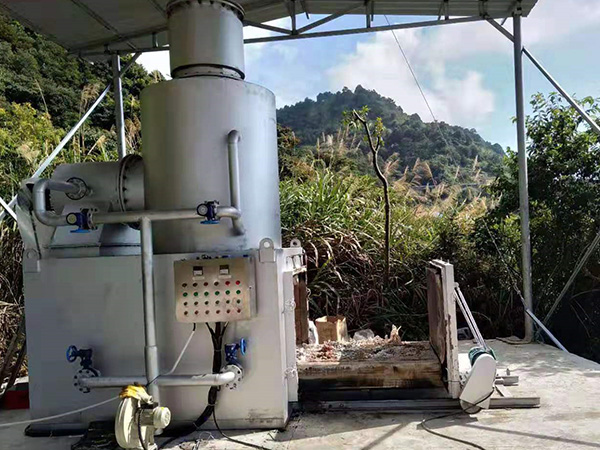






How to effectively treat waste has become an important issue of global concern. Holy Shield has been focusing on the innovation and research of waste incineration technology. Today, I will share with you the application analysis of waste heat in domestic waste incinerators for your reference.
1. Process flow
For the waste incinerator, it mainly draws the primary air from the waste pit. After the steam is heated, it will be sent into the furnace by the staff for combustion support. At this stage, the waste heat recovery system can be used to recover the waste heat of the flue gas and heat the primary air. The application of this system can not only reduce the steam consumption of the boiler, but also increase the power generation to a certain extent and improve the use of the boiler.
At the same time, boiler deoxygenated water is a very important circulating medium in the waste heat recovery system. The technicians use the flue gas to heat and vaporize, and after the steam-water separation in the steam drum of the waste heat recovery system, the incinerator is heated by steam for the first time, and the condensed water is returned to the steam drum for the second heating. In order to effectively control the low temperature corrosion of the tube bundle, the inlet water temperature should also be adjusted to ensure that the wall temperature of the heating surface is always higher than the acid dew point temperature of the flue gas.
2. Preheat application
The waste heat of domestic waste incinerators is often used for power generation and heating. For example, it is converted into electric energy as the domestic electricity for nearby residents, and the waste heat of the incinerator is used for heating in winter.
In the actual application process, in order to improve the utilization efficiency of waste heat and save the application cost, it is necessary to carry out scientific planning of the incineration plant. First of all, it is necessary to pay attention to the utilization efficiency of the waste heat of the domestic waste incinerator. For example, build the incineration plant near the playground, and maintain the normal operation of the playground by recycling and applying the waste heat of the domestic waste incinerator. Because the incineration plant is close to the playground, it can be effectively reduce the loss in the process of energy transmission and improve the utilization efficiency of waste heat; secondly, ensure the harmlessness of waste heat recovery and application of domestic waste incinerators, that is, while recycling and applying waste heat, the waste heat generated in the process of domestic waste incineration should be treated. Toxic and hazardous substances are effectively treated to avoid these substances from harming the environment and the health of nearby residents.
In a word, at the moment when the amount of domestic waste is huge, the heat generated by the incineration of domestic waste is quite large. Collecting this heat and using it scientifically can reduce the dependence on other energy sources, especially non-renewable energy sources, which is of great significance to the long-term development of mankind.
Holy Shield has 16 years of production and R&D experience and is a professional incinerator manufacturer. We have obtained 30 patent certifications. Our ability can better help you solve the problem of waste disposal and discharge standard, leave your confusion, we will answer you quickly.